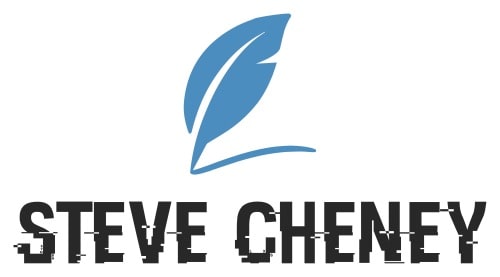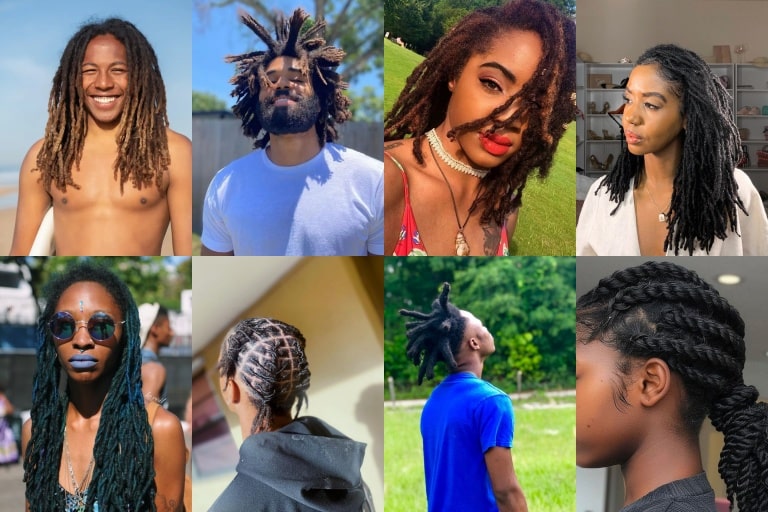If you’re looking for a hairstyle that’s both head-turning and hassle-free, locs might be precisely what you’re looking for.
The timeless and remarkably versatile hairstyle has been around for thousands of years, making it also a symbol of cultural identity and self-expression.
One of the best things about locs is that the blend of intricate coils and styling techniques offers a wide range of unique styling options. However, with all the variations of the iconic hairstyle, choosing the perfect one for you can be tricky.
Today, I’ll walk you through 8 of the most popular types of locs, including their description, properties, and maintenance requirements, to help you make up your mind. So, without further ado, let’s dive right in!
1. Traditional Locs
Traditional locs, commonly called dreadlocks, are one of the most popular hairstyle forms.
This technique involves creating coils in your hair using a large group of hair strands, ranging from medium to large. Ideally, the diameter of each loc ranges between 5 to 15 millimeters.
Since it uses large groups of hairs, it involves a relatively simple locking process compared to most other types, which usually require twisting by hand or palm rolling.
The simplicity of the locking technique makes it widely available, as it doesn’t require exceptional expertise or specialists. This also makes the loc maintenance relatively easy and can be done at home.
Pros
- Easy to start, retwist, and maintain
- Affordable when compared to other styles
- Available among all kinds of loc specialists and hairstylists
- Easy to convert into free-form locs later for added versatility
- You can use rollers, Bantu knots, or pipe cleaners to create beautiful twists and curls to the locs.
Cons
- Unsuitable for flat ironing or hot curling due to thickness
- Requires continuous maintenance to maintain the desired look
2. Freeform Locs
Freeform locs, also known as “natural locs,” are a unique style that embraces a natural, untamed aesthetic. This makes it a perfect choice for those who love to let their hair grow wild and free.
Unlike other loc styles involving twisting or interlocking, you let the freeform locs develop entirely independently.
This creates a wild and unique look with locs varying in size, thickness, and direction, depending on the nature and density of your hair and its tendency to mat.
Freeform locs tend to be larger in thickness than traditional locs, starting at 15 millimeters, and they’re typically started with or without stylists.
Pros
- A bold statement that pushes the boundaries of conventional beauty standards
- Unique results that stand out due to its hands-free approach
- Tends to be quite thick, depending on your hair density
- Doesn’t need a professional
Cons
- Loose hairs and fuzz are more visible
- Obvious lack of uniformity
- May require a lot of maintenance at later stages (especially when converting to other styles)
3. Semi-Freeform Locs
For those who crave the untamed beauty of freeform locs but also appreciate a touch of definition, semi-freeform locs offer the perfect middle ground.
This style combines elements of both freeform and traditional loc methods, resulting in a look that’s naturally formed but with a bit of guidance.
They typically begin as traditional locs, especially the thicker ones. The semi-freeform will start developing as you retwist the hair less frequently.
The new growth accumulates at the base of the loc, leading to thicker, fuller locs compared to meticulously maintained traditional styles.
Pros
- Offers a unique character without completely sacrificing uniformity
- Easy to develop from a familiar starting point (traditional locs)
Cons
- You can’t use curling irons to style them, so rollers and Banktu knots are necessary
- The locs will become fuzzier with time due to loose hairs
4. Sisterlocks
Sisterlocks is a unique take on locs that stands out for its meticulous technique and uniform appearance. They have one of the tiniest loc diameters, ranging between 2 to 3 millimeters.
JoAnne Cornwell developed the trademarked technique and used special interlocking tools, resulting in a head full of small, uniform locks for a neat aesthetic for those with extremely curly hair.
Unlike thicker locs, Sisterlocks’ size allows for heat styling. In other words, you can straighten or curl them with a flat or curling iron, opening up a world of styling possibilities.
The small size also makes them lightweight and easier to work with if you find heavy locs uncomfortable.
The process of creating Sisterlocks involves a standard method. This starts by examining the hair to see if the locs suit you. The locking session for Sisterlocks is lengthy and requires a certified specialist and some follow-up sessions.
Pros
- Polished and uniform locs with a versatile look thanks to its loose-hair-like texture
- Significantly lighter and more comfortable than traditional locs
- Offers heat styling freedom
Cons
- Premium price tag compared to alternatives
- Takes multiple sessions to install it fully
- Requires a qualified specialist, which isn’t as commonly available
- Needs continuous maintenance and retightening every 4 to 8 weeks
5. Microlocs
Microlocs offer a stylish and versatile alternative to Sisterlocs, as they’re also 2 to 3 millimeters thick, offering a style similar to micro braids.
The style is more widely available than the trademarked Sisterlocks and offers a larger capacity for styling while staying lightweight.
Pros
- Easy to style using curling and flat irons
- Widely available and doesn’t require specialized training, compared to Sisterlocks
- Lightweight and comfortable
Cons
- Requires a lot of maintenance and retightening to maintain the look
- A bit pricey
- Can’t be converted directly into freeform locs
6. Instant Locs
Instant locs are a technique for creating the appearance of mature locs but without the months of waiting for natural locking to occur.
The style is created by sectioning your hair, backcombing the sections for texture, and then using a crochet tool to interlock your loose hair to create a loc formation.
One of the best things about instant locs is that it works with a wide range of hair types. But despite its speed, it still requires a lot of maintenance to prevent unraveling.
You also need to consider the specialist qualifications because it can damage your hair significantly if done wrong.
Instant locs shouldn’t be confused with faux locs, which install loc extensions rather than converting your hair to locs.
Pros
- Shortcuts the lengthy process of developing locs naturally
- Flexible results, depending on the technique and style you choose
- Plenty of trained specialists can easily apply it
Cons
- Require continuous retightening to prevent unraveling
- Doesn’t have the density and maturity of natural locs
7. Florida Wicks
Florida wicks, also known as wick locs, are among the most unique forms of dreadlocks. The large loc size characterizes it and stands out from traditional ones due to its impressive diameter, typically ranging from 2 to 5 inches (50 to 200 millimeters) per loc.
To create them, stylists can use a crochet needle to merge multiple thinner locs into one thicker wick loc.
Alternatively, they may immediately use hair extensions and rubber bands to combine loose hairs into larger locs. The style requires plenty of intervention to maintain its thickness and structure.
Pros
- Extremely distinctive look that doesn’t resemble any other types of locs
- One of the thickest types of locs
- Can be styled in a variety of ways
Cons
- The significant weight of thick wicks can put stress and tension on the scalp
- Cost a hefty premium to start
- Not well-suited for intricate styling techniques like curling
- May not be socially accepted everywhere due to their extreme look
- Finding a stylist can be a challenge
- Can’t be directly converted to other loc styles
8. Two-Strand Twists
Two-strand twists are a popular hairstyle that can be enjoyed on their own or used to kickstart your loc journey.
Unlike comb coils-based locs, which might unravel on some hair types, two-strand twists offer more stability.
You’ll need at least a few inches of hair to start this locs, but ideally, four inches is best for creating well-defined twists.
You’ll twist two sections of hair together, and you can apply other techniques like palm rolling and comb coiling as the hair starts growing.
Pros
- Helps protect the hair while also providing a stylish look
- Easy to start and manage
- Fairly affordable
Cons
- Requires retwisting to prevent the hairs from becoming loose and straining the scalp
- Takes some time to mature
Final Thoughts
As you can see, there are plenty of different types of locs to choose from. Each one has its unique properties that stand out. In other words, there’s no right and wrong decision while picking locs, as it always boils down to your personal choices.
However, it would be best to consider your hair type, lifestyle, desired level of maintenance, and budget before making up your mind for the best results.
Also, consider consulting your hairstylist about the options and whether your desired style needs specific qualifications or tools.








